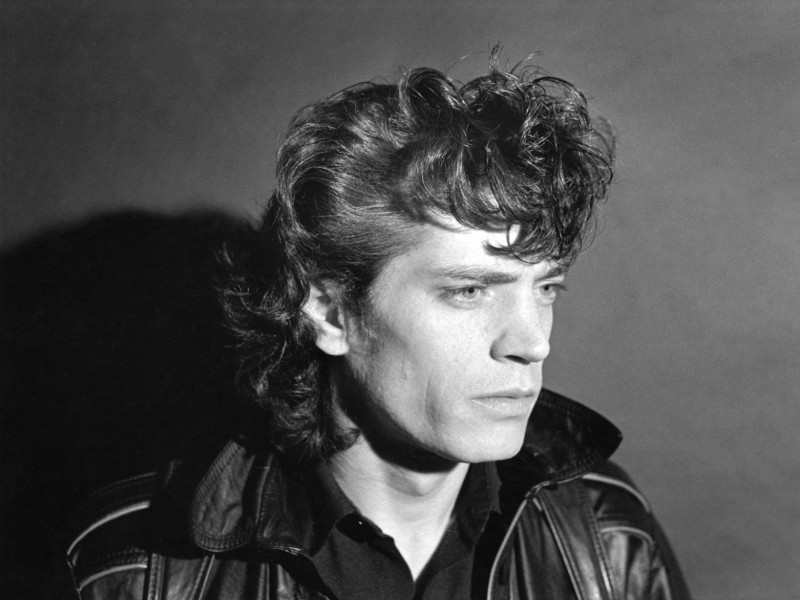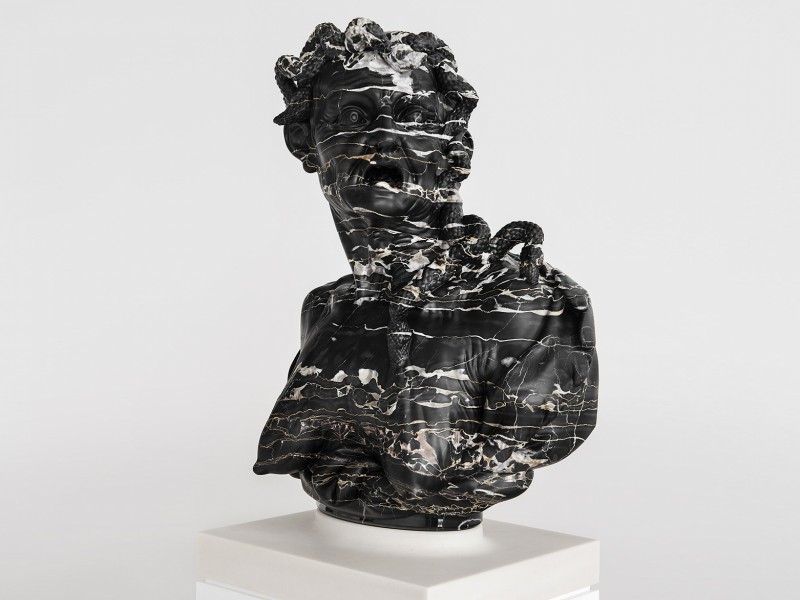When I interviewed Thierry-Maxime Loriot in 2014 on his transition into fashion curating, he called himself a storyteller. Two years later when speaking about his work curating the Viktor&Rolf: Fashion Artists exhibition at the National Gallery of Victoria, he similarly stated “You can put something on the wall, but it’s better if you tell a story. It’s like going to a movie, visitors want to experience something.”
Unlike a traditional fashion exhibition, the exhibition traces neither chronology nor themes. Instead, it is a fashion installation. At the beginning of the project, Loriot asked designers Viktor Horsting and Rolf Snoeren to select the top twenty-five pieces of their career. He did the same. When they came together they had twenty-four works in common. From that initial checklist, they created an exhibition that reflected the history of Viktor & Rolf, their signature work, their journey to success, their artistic approach, their sense of humour as well as their frustrations with the fashion industry. Following the opening of the exhibition the designers said that, “Rather than reject the frustration that we felt at the fashion industry, we embraced it,” and they channelled those emotions into their practice. The exhibition documents a spectrum of those emotions, translated into material forms. Some scream ‘No’ at the angst of trying to summon creativity and the inspiration to create yet another collection to unrealistic fashion deadlines, whilst others humorously question celebrity culture by making elegant red carpet dresses quite literally out of red carpet.
Prior to the opening of the exhibition, in October 2016, I spoke to Loriot about his curatorial approach and what he hoped a visitor to the NGV might experience upon seeing the exhibition.
Paola Di Trocchio: When did you first encounter the work of Viktor & Rolf? What were your impressions?
Thierry-Maxime Loriot: The first time I encountered their work was in 1999 when I saw their Russian Doll collection on television. The collection featured a single model, Maggie Rizer, dressed with each garment of the collection piled on her, one garment at a time. I was mesmerised, almost puzzled about how you could push fashion that far. These were beautiful couture clothes, embroidered with crystals, using a fabric [jute] that did not resonate with the word couture … Yet they made it look incredibly luxurious and beautiful.
PD: Is this why you began with the Russian Dolls collection? What drove the placement of the pieces?
TL: Exactly! I thought it was best to focus the first gallery on the collection that garnered them international recognition. When visitors enter they would be like ‘Ha! ok! I know that collection!’ Each collection is a story on its own. The first gallery being maybe a bit darker with the No collection and Zen Garden which was the return to couture after years of ready-to-wear—which was not a great experience for them creatively.
PD: In the past you have called yourself a storyteller, but the exhibition is neither thematic nor chronological. What is the story in this exhibition? TL: It is a story not only about the work of Viktor & Rolf, but also a very important and necessary story about friendship, trust, collaboration, belief and creativity. It is very important and relevant to present exhibitions like this to a young public. It is very powerful to understand that you can come from the smallest town in the Netherlands with no connections in the art and fashion worlds and become successful and gain international recognition.
PD: Viktor and Rolf work together almost as one. After working with them on this exhibition for over a year and a half, what are their distinct differences?
TL: They really are like one! They each have their opinions but they compliment each other very well and have very constructive answers and comments to questions. I think what surprised me the most is how shy they can be, but also how hilarious they are. They just look too serious in their pictures.
PD: How important is the archive in fashion? In an industry that is constantly moving forward, what is the importance of looking back?
TL: I think it is important to archive fashion to understand movements of society. Everything changes so quickly now. Not all fashion is relevant or collectable, that is why we have fashion and costume curators who can look back to understand the present and see where things come from. History is always repeating itself and some people break the mould, break barriers and bring new things, it is important to maintain a trace of that.
PD: This reflects the position of fashion in the art gallery. Why do you think people have previously been reluctant to recognise fashion as art?
TL: For many years art was paintings and sculptures. It is an evolution. The best example is video art. It was a ‘new’ media which took time to be accepted as an art form. It’s the same with fashion. Fashion is something very democratic, more easily accessible than a Renoir painting or a Giacometti sculpture, but now it is easier to see a Picasso in any museum in the world than a Viktor & Rolf dress. You can get the same emotion when you see haute couture as when you see a work by a great master. I do not make a differentiation. Although not all fashion, just like art, is always museum material.
PD: What did you learn as a curator working with Viktor & Rolf?
TL: I definitely learned more about their work but also how important it is to understand their vision, and that they approach their work more as art than just ‘fashion’. This exhibition became very personal for them.
PD: More broadly, what is the greatest challenge of being a fashion curator?
TL: I think it is mainly to be understood by everyone, from the artist you work with, to the museum, to the public. If people cannot connect with the work of an artist or if you just do the same as everybody else, then I think it is pointless. Most museums are very classic in their approach and are scared to try new things, but I must be very lucky to work with museums like the National Gallery of Victoria and the Montreal Museum of Fine Arts, with directors who have an open vision of what art should and could be and how they can be presented.
Related Features
-
179
-
-
-

